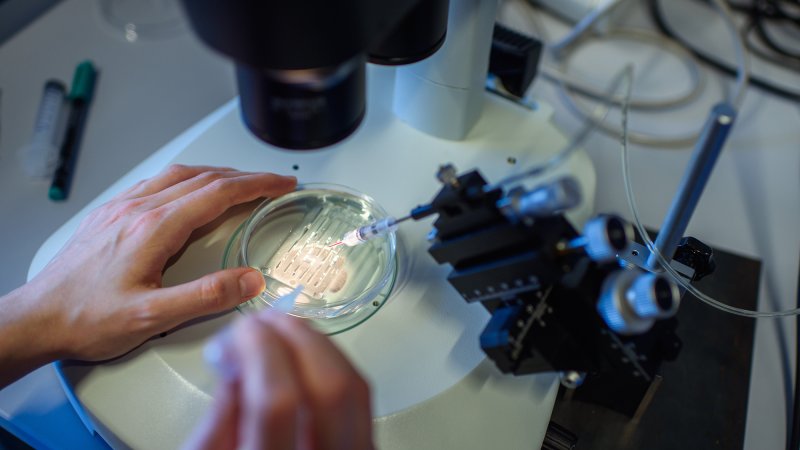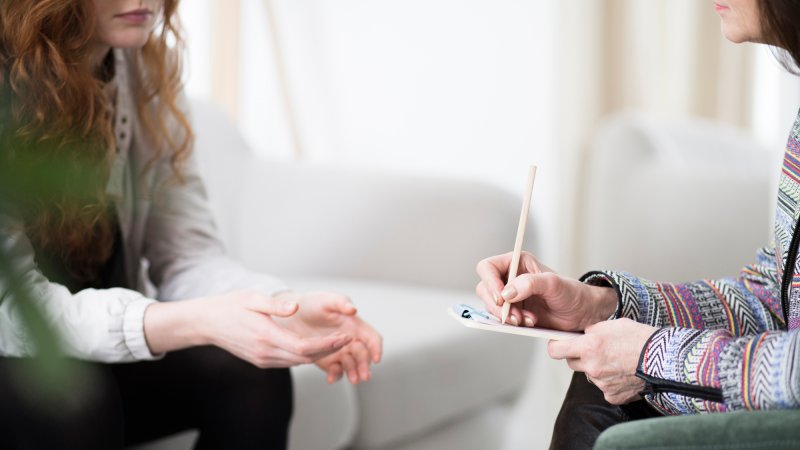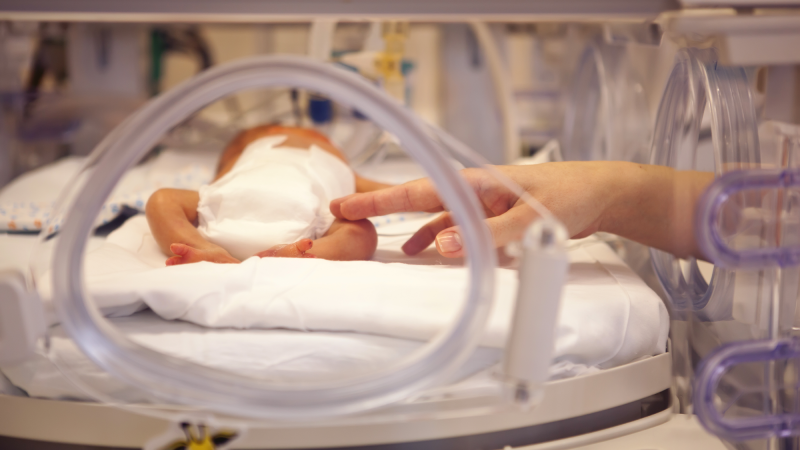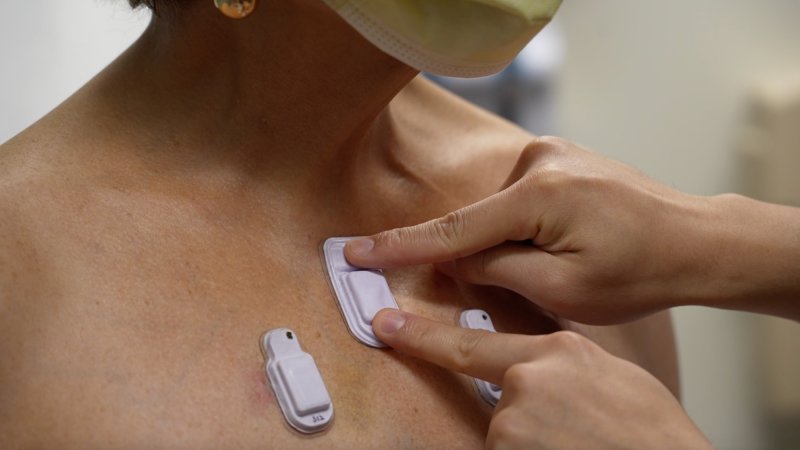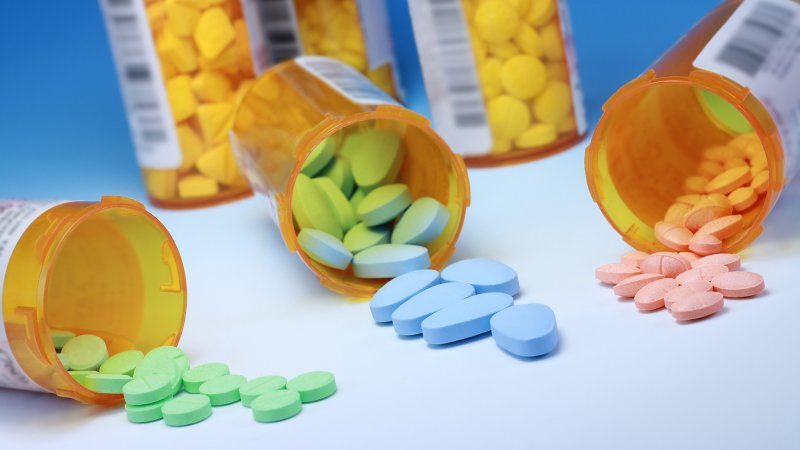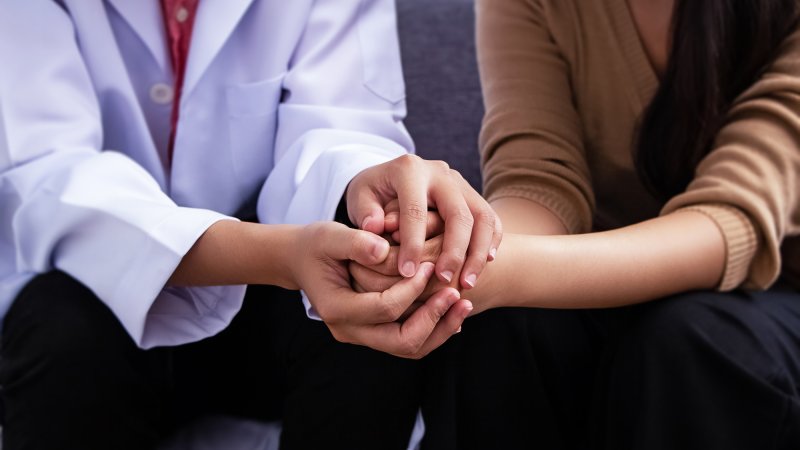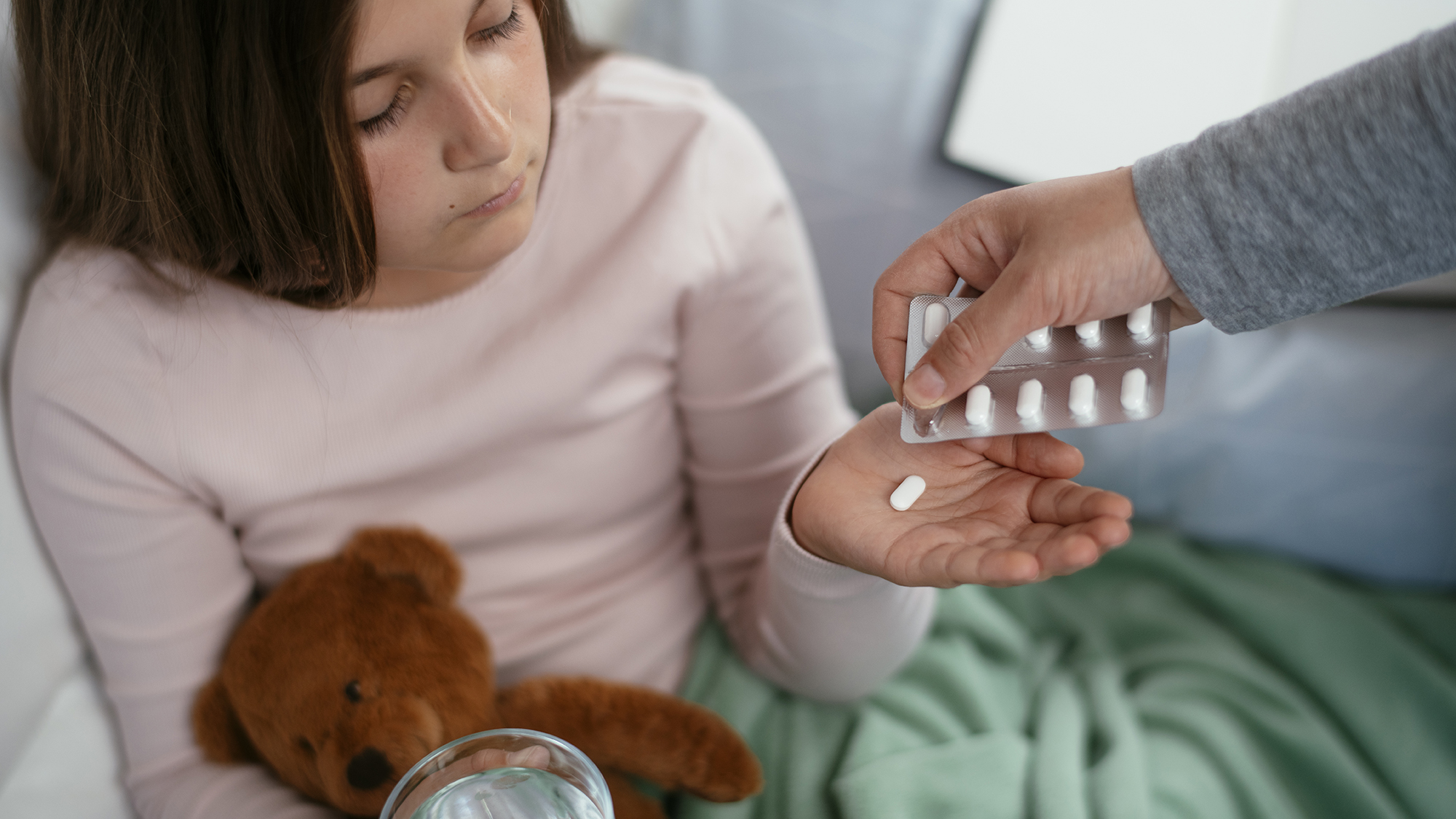

This article was originally featured on Undark.
Mark Turner has worked in pediatrics for more than 30 years, and he’s tired of telling parents there’s nothing he can do for their children. Very few medicines are developed with young people in mind, he said. “It’s just very difficult, watching them be sick, watching babies die.”
Turner is referring to the lack of research into how different medications perform in children. When drugs get approved, it’s usually on the basis of how they function in adults. This holds true for nearly all conditions, including mental health disorders, cancer, and rare diseases.
As a result, children are usually prescribed medication “off-label,” meaning the drug is being used differently from what’s specifically outlined on the package insert. Most drugs used for newborns are given off-label, as well as about half of those prescribed for older children, said Vivianna Guzman, executive director of I-ACT for Children, a nonprofit seeking to improve children’s access to drugs.
This can leave physicians and parents with a difficult dilemma. Although the vast majority of drugs that are used off-label for kids appear to be safe, the lack of proper testing puts children at a relatively higher risk of side effects than adults, experts told Undark. And medications that work well in adults might also be less effective in young people. Further, in dire situations, when the need for medication is urgent, physicians and parents may find that they lack access to clinical trials, which historically excluded children. The reasons for all of this, experts said, are both practical and financial.
The American Academy of Pediatrics has stressed that off-label prescribing does not necessarily entail great risk. Rather, it means that the medication has not met FDA guidelines, which call for studies to be conducted in the population that will use the drug: in this case, children.
Absent such evidence, medical groups create dosing guidelines based on expert consensus. That consensus may be based on a combination of clinical expertise and systematic reviews of the literature, and on input from regulators or organizations such as the World Health Organization. It’s not guesswork in the sense of tossing a coin, explained Turner, who is involved in a European effort to support pediatric clinical trials. Still, he added, it’s less-than-ideal when kids’ medications don’t meet the same bar that everyone expects for adults.
Medicines were developed on an ad-hoc basis until the 1960s, when the Thalidomide scandal led to the reform of the U.S. Food and Drug Administration’s drug approval process. The agency began requiring drugs and medical devices to be tested for specific conditions in clinical trials before they could be widely prescribed. For decades, regulators and medical ethicists argued that children should be excluded from these trials because they are a vulnerable population, considered to be at risk of exploitation by researchers.
These days, scientists agree that research is appropriately safe for children, who have much to gain from participation in clinical trials. But change has been slow. “For the most part, drugs are never developed for kids,” said Florence Bourgeois, an associate professor of pediatrics at Harvard Medical School. “Drugs are developed for use in adults, and then in some cases tested for use in kids.” This allows for greater uncertainty about the safety and effectiveness of medications when they are used in pediatric populations.
A 10-year study looking at 1.74 billion outpatient pediatric visits found that roughly 40 percent resulted in an off-label prescription. Antihistamines were the most common off-label medication, followed by antibiotics and antidepressants. One of the study’s authors, Daniel Horton, an associate professor of pediatrics and epidemiology at Rutgers, said there is less evidence supporting antidepressants’ benefits in children than there is for adults.
For decades, regulators and medical ethicists argued that children should be excluded from clinical trials because they are a vulnerable population, considered to be at risk of exploitation by researchers.
Most of the antidepressants kids receive—including Trazodone, Citalopram, and Bupropion (sold as Wellbutrin)—have not been approved to treat depression or any other condition in kids, and potential side effects include suicidal behavior and possible heart problems, he said. (Horton added that he is not a psychiatrist.) Some of the documented risks are known to prescribers, he continued. But some of the risks are not well-known.
Sertraline, also known by the brand name Zoloft, is often prescribed to children and teens with depression, despite the fact that it has only been approved to treat OCD in pediatric populations. Although one study showed modest benefits in young people with depression, Horton wrote in an email, the study also revealed many side effects. “It did not lead to regulatory approval,” he said.
Horton’s paper suggested that off-label ordering was on the rise, which could create greater room for error or surprise. In outpatient care, 1 to 2 percent of children react badly to FDA-approved medicines. With off-label drugs, the rate is about half a percentage point higher, Horton said. So the risk to an individual child is small, and sometimes the bad reaction is nothing more than a temporary rash or diarrhea. But some side effects are life-threatening, including heart arrhythmias or suicidality. The risks of a bad outcome are higher for children with an underlying illness or who are taking multiple medications
A 2017 paper studied adverse reactions in individuals taking anti-psychotic medications, which are commonly prescribed off-label to young people with aggression and other behavioral issues. Using the FDA’s official reporting system, the authors found that children were more likely than adults to become aggressive, to exhibit abnormal behavior, and to struggle with suicidal thinking when on the medication.
Children are vulnerable to more or different side effects because their bodies differ significantly from those of adults. For one thing, they grow and develop relatively quickly. Ideally, scientific studies would assess the effect of medicines at each developmental stage, experts said. It’s not a question of dividing a dose by two for teens and four for newborns. Practitioners need to take into account how long a medicine taken by mouth spends in a patient’s stomach, and how it interacts with the liver, kidneys, guts, and intestines.
Additionally, some organs function differently in children. Their kidneys, for example, are less active than those of adults, which could lead to a build-up of toxins or could make the drugs less effective. Babies and toddlers also process food more quickly than their grown-up peers, and they have less fat. And newborns are “much more watery, less fatty than everybody else,” Turner said.
These biological realities make it particularly tricky to provide medical care to babies in neonatal intensive care. Nearly all of the medicines they receive, including even food dispensed through intravenous drips, are untested in humans their size. In these children, it can be hard to distinguish disease symptoms from drug side effects. About 10 adverse drug reactions in babies are reported to the U.K.’s national reporting system each year, but that number is too low to be believed, said Turner. When he and his colleagues did a careful study of a single hospital, they found that 35 out of 193 newborns, or roughly 18 percent, experienced adverse drug reactions. These included fever, increased heart rate, and impaired kidney function.
“There must be more adverse drug reactions” than are officially counted, said Turner. Doctors just don’t know how to identify these events with certainty.
And even when the risk of side effects is low, physicians may be unsure about a medicine’s efficacy in pediatric populations, said Harvard’s Bourgeois, who studied the status of off-label prescription in 52 U.S. children’s hospitals. All too often, she said, “we use drugs in kids that ultimately just don’t work.”
The relatively poor state of pediatric research also means that children with rare diseases may struggle to access experimental treatments that are available to adults enrolled in clinical trials. Jillian Arnold wanted to try an experimental drug for her son, Roman, who has a condition called acid sphingomyelinase deficiency, or ASMD. Affecting one in 250,000 people across the U.S., the condition causes severe inflammation in a person’s vital organs, including the brain. On her podcast, Confessions of a Rare Disease Mama, Arnold describes it as a kind of baby Alzheimer’s because children start to forget skills they had acquired, like walking or smiling.
In addition to cognitive symptoms, Roman had gastrointestinal distress and would sometimes throw up five or six times, Arnold recalled. “We got to the point where we wouldn’t even leave the house because he was throwing up so much.”
The options for treatment were sparse, but a clinical trial was under way for a drug that was designed to help with ASMD’s gastrointestinal symptoms. There was just one problem: the enrollment date had already passed. Arnold said she lobbied the drug company intensively, an experience she described as “a beast.” And after a year, she got access to the medication. It eased Roman’s physical symptoms, she said. It also helped her daughter, who was born eight months after Roman was diagnosed, and also has ASMD.
“I call it a miracle drug because it changed our life,” said Arnold.
She subsequently learned of a therapy that could combat her children’s neurological damage. It was primarily given to adults with ASMD. Just one child had been on it before. She presented the idea to her doctors and worked with a charitable organization to obtain access to the drug, attending meetings with the pharmaceutical company. After a year, Roman received the drug and his sister got it a year later.
Children with ASMD sometimes live for just a few years, said Arnold, reflecting on her experience. This is why she worked so hard to access an experimental treatment—and why the waiting was deeply painful. “With us, it’s like, okay, they’re going to die if they don’t get treatment, and they’ll die fast.”
Experts who spoke with Undark pointed to two main reasons for the lack of children in clinical trials: financial incentives and logistics.
Many top-grossing medications are for conditions that primarily affect adults, including rheumatoid arthritis and age-related macular degeneration. In the world of cancer, people under 20 account for just 1 percent of patients, said Max Coppes, a professor of pediatrics and clinical internal medicine at University of Nevada, Reno School of Medicine. “That’s 1 percent of the market,” he said. Drug companies don’t stand to earn much from running additional trials, so they don’t. “That’s the reality,” said Coppes. Pediatricians have never known anything different.
“I call it a miracle drug because it changed our life.”
There are non-monetary hurdles, too. As a group, kids are healthier than adults, making it harder for companies to recruit enough patients for clinical trials. If a hospital wanted to run a clinical trial for a drug to treat ASMD, it would likely need to recruit young patients who live out of state or even in another country. And with neurodevelopmental conditions, such as cerebral palsy, it can take years to understand a therapy’s impact.
Government agencies and politicians have been trying to address the issue. In 2002, Congress passed the Best Pharmaceuticals for Children Act, which offers drug companies six months of extra exclusivity on a patent if they include children in their clinical trial for a drug approval. And in 2003, Congress passed the Pediatric Research Equity Act, which gave the FDA authority to oblige pharmaceutical companies to perform certain initial studies on children. In Europe, these measures were combined in the Pediatric Regulation of 2007.
All of the acts have drawbacks, Bourgeois said. For example, the most lucrative medicines generally treat adult conditions, such as breast or prostate cancer. Pfizer uses an active ingredient called sildenafil in a drug for hypertension and in Viagra, the popular treatment for erectile dysfunction. The company submitted paperwork on the ingredient’s relevance to children with hypertension, and although the ingredient’s safety was never established in kids, the company gained an extra six-months patent on both its hypertension drug and on the wildly profitable Viagra.
This was, “a lucrative outcome,” Bourgeois wrote in a paper published in the New England Journal of Medicine. In an email to Undark, she said that the studies could be useful, helping to inform off-label prescribing to children. But, she added, drug companies will choose what to study “based on the large adult revenue as opposed to considering pediatric need.” Andrew Widger, a spokesperson for Pfizer, noted that the value of pediatric investigations is decided upon by regulators. “I’m not going to comment on other people’s speculation,” he said of the NEJM piece. “You look at each medication case by case, and if there’s a pediatric indication, we explore it.”
These acts also do not affect the many drugs with a lapsed patent. “Once it’s in the generic format. It’s tough,” said Bourgeois.
When the incentives do align, it proves feasible to conduct trials even on the youngest, most fragile patients. Recently two treatments were approved for an eye condition that only affects premature babies or those weighing less than 3 pounds. In severe cases it causes vision loss or even blindness. This is a success story, said Turner—the kind he’d like to see more of going forward.
“We now realize that we want to protect children with research,” said Turner. “We don’t want to protect children from research.”

